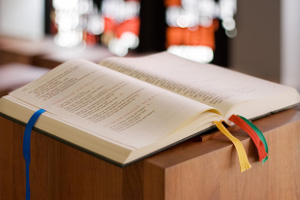 The setting of this story reminds us once again of the cultural and historical distance between ourselves and the story.
The setting of this story reminds us once again of the cultural and historical distance between ourselves and the story.
Can you imagine a “sinful women” wandering into your house while you are giving a dinner party or having a meal with friends? Can you imagine her washing and anointing your guests feet? Even if leaving out the tears and hair that make an even more disturbing picture the basic premise of this story is completely alien to us. Before we jump to easily to conclusions on what this story might mean for us we need to be aware how much of it is rooted in a way of life we do not understand.
Clearly for Luke’s first readers the women being there is not an issue; the sharp distinction between the public space of the street and the private space of the house is not known at that time. The dining room is a public space. The big question (apart from the cultural ones about the difference between public and private space) this story raises for me is who Luke invites us to identify with. Is it the named Pharisee, Simon, who invites Jesus into his home, who judges rightly, who has little debt and maybe little love? Or is it the “sinful women”, unnamed, unloved, with many tears and much hair, who is forgiven and loves?
12 June 2016
Luke 7: 36-8: 3
This weekly blog on one of the lectionary readings is by Anne Claar Thomasson-Rosingh, Programme Leader for Lifelong Learning at Sarum College.

Leave a Reply